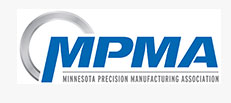 Precision metal stamping is the fastest and most accurate way to make hundreds or thousands of parts quickly and according to exact specifications.
Precision metal stamping is the fastest and most accurate way to make hundreds or thousands of parts quickly and according to exact specifications.
With precision metal stamping, metal stamping can be streamlined to form steel tools and metal parts in a mostly automated manner. Precision stamping is different from other metal fabrication techniques due to the exact measurements of the finished product.
Precision stamping is most beneficial to microstamping operations. It requires even greater precision for the smaller pieces created in this way than for more substantial pieces. Even a millimeter of error could compromise the integrity of a microstamped part. When it comes to manufacturing small items, accuracy is more than just useful.
Precision Metal Stamping and Assembly
Precision metal stamping begins with a mouse rather than with the metal itself. Engineers can better understand how metal will behave when bent or shaped into specific patterns by making a prototype first. Nonetheless, engineers start with a virtual version built in a computer before building a physical model.
Equipment Used
Multiple press options and tooling methods are available for stamping. The choice of press depends on the operation – manual or hydraulic.
- Presses that use a flywheel for energy storage and transfer, typically slower, are mechanical presses. They have capacities ranging from 20 to 6,000 tons and stroke sizes between 5 and 500mm, making them better for smaller projects.
- Presses powered by hydraulic power amplify mechanical movements into large amounts. A hydraulic press is bigger and has a larger stroke size and speed. The stroke size may be up to 800mm, and the size may range up to 10,000 tons.
A press is one part of the equipment, but dies are another. The machine exerts the necessary force for the stamping while the die customizes how that force affects the shape of the metal. While some dies cut, others shape.
Depending on their design, presses may do one or more tasks. Presses with multiple dies reduce production rates, thereby cutting costs. In order to ensure accuracy, efficiency and cost reduction, your engineers working on your project must combine the machinery with dies and integrate the plan from the computer.
Metal stamping is often used to produce parts for consumer goods and military equipment that require high levels of precision.
- Aerospace components: NASA hired a company to create the electronics that would eventually go into Mars rovers Spirit, Curiosity and Opportunity. This company, Presidio Components, needed stamped parts for their ceramic capacitors that would have a consistent design and would not fail even on a trip to space. They used DIE-TECH stamped parts to make their capacitors, which now are a part of aerospace history.
- Medical equipment: Stents are tiny parts that fit into blood vessels. To create these metal parts, we microstamped metals to create medically acceptable results every time. Without quality products used for implanted stents, doctors could put patients’ lives at risk.
- Electronics: Tiny parts for electronics must not have errors. IBM’s PowerPC used billions of accurately stamped edge clips. Even with a tiny 0.5-millimeter pitch, the parts came out without any flaws, as IBM required. Such accuracy is difficult to find in the metalworking world unless you opt for precision stamping.
- Specialty parts: Print ribbons remain in a few sectors, and the company that sought to corner the market needed tiny, 12-millimeter wheels for the printers. These specialized parts required exact production to avoid failure of the printers. Such precision metal stamping can create such pieces.





